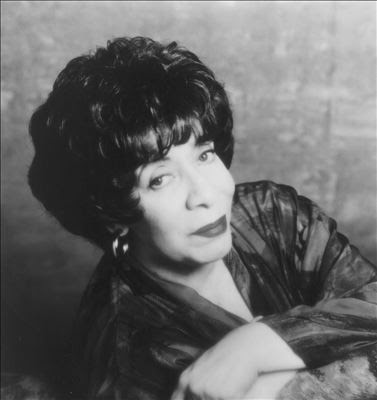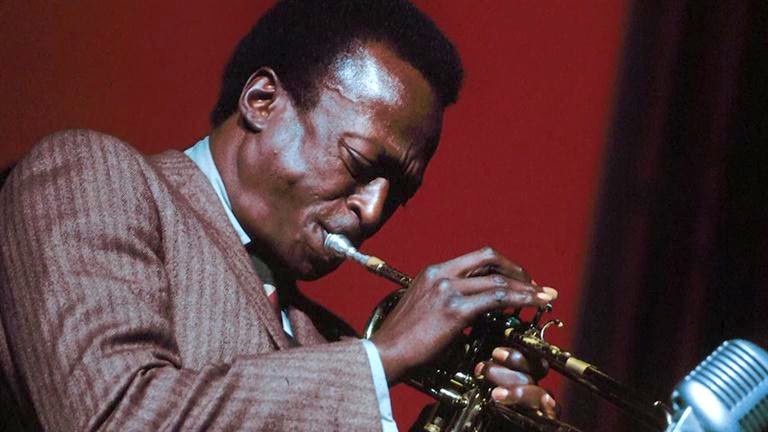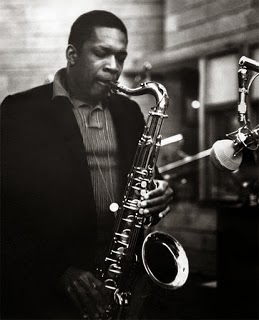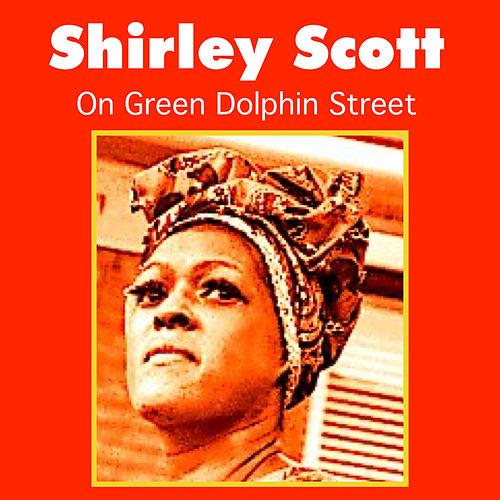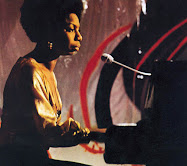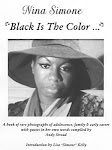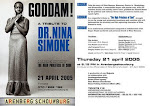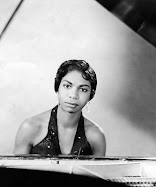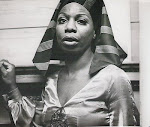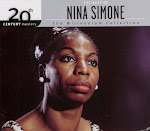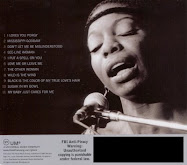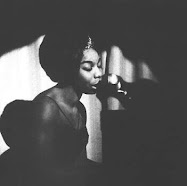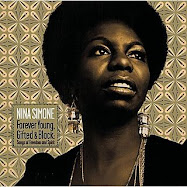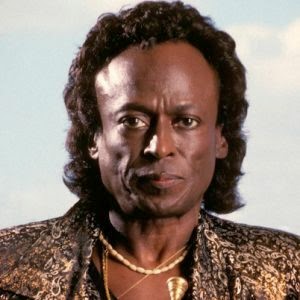Tuesday, November 15, 2016
The Marsalis family
The Marsalis Family: (l-r) Ellis, Jr., Wynton, Delfeayo, Jason, and Branford
Delfeayo on why he plays the trombone:
"The trombone kind of suits my personality and when the band teacher came around with all the instruments, there was something about it that attracted me to it. I realized later that? the trombone is the peacekeeper in the band. In the New Orleans band the trumpet plays the lead. The saxophone's job, or the clarinet, is to make the trumpet sound good. The trombone's job is to make both the saxophone and the trumpet sound good, and it?s also the bridge between the rhythm section---the drums and the tuba---and the horns. So, the trombone player has to be very flexible, whereas, you know, the trumpet can afford to be more just singular thinking because their job is really just to play the melody. So that kind of suited the way that I function in our family."
Wynton on the importance of jazz:
"We want everybody to have jazz in their life...What is it about jazz that makes it important in peoples? lives? It tells people it's okay to be themselves. And then it tells you it?s okay for another person to be themselves too, even though it?s not like you."
Jason on innovation:
"There?s one thing that honestly troubles me a bit and it has to do with the need for innovation. There really should be an emphasis on quality more so than innovation. I think it is very important to realize that great music is timeless and that the original intent of music was not about innovation or doing the new thing, it was people that wanted to express themselves on the highest level possible that they could. And I think now there's this big concern about doing something new or doing the newest thing tomorrow, rather than developing your craft over many years and years and always see it as a evolving product....I think that if there was more of an emphasis on just quality and skill more so than new, I think that, overall, music and art would be in a much better place."
Branford on what he learned from playing with Sting:
"Sting?s people called and said, 'Yeah, we want you to join this band.' And what was really?great about it was all of a sudden I had to play 30-second solos, as opposed to these five-minute, really long-winded winding solos I was playing with Wynton's band. And I was using as few notes as possible, trying to employ space, and all of a sudden you've got to get in everything you have to say in 30 seconds. And you do that for about a year and a half and then you come back to play jazz and then all of a sudden there?s a sense of urgency that just wasn?t there before, where it was mostly cerebral. It had that kind of emotional energy that I wasn?t able to find in the music, because I had been spending so much time with the intellectual aspects of it."
Ellis Marsalis for the Marsalis Family
"I hope my sons and I continue to exemplify the quality of excellence in the work that is expected from the recipient of The NEA Jazz Masters Fellowship Award . I wish to thank all of those panel members who consider our family worthy of this award and assure them we will not disappoint them in the future."
NEA Jazz Masters: Tribute to the Marsalis Family
The story starts in New Orleans, with the birth of Ellis Marsalis, Jr. in 1934. Although the city was noted for Dixieland and rhythm-and-blues, Ellis was more interested in the bebop sounds coming from Charlie Parker and Dizzy Gillespie. His first recording was modern jazz music performed with fellow New Orleans musicians Ed Blackwell (who eventually ended up drumming for Ornette Coleman), clarinetist Alvin Batiste, bassist Richard Payne, and saxophonist Harold Battiste as the American Jazz Quintet.
After earning a BA in music education from Dillard University in 1955, Ellis continued to play modern jazz with his local colleagues until enlisting in the Marine Corps the following year. He soon became a member of the Corps Four, a Marines jazz quartet that performed on television and radio to boost recruiting efforts.
After the Marines and a brief teaching stint in Breaux Bridge, Lousiania, he returned to New Orleans with his wife Dolores and four children to work in his father's motel business while freelancing at gigs around town, such as recording with the Adderley Brothers. From 1967-70, Ellis performed with trumpeter Al Hirt.
In the 1970s, he studied music education at Loyola University, eventually earning a master's degree. In 1974, he became the director of jazz studies at the New Orleans Center for Creative Arts high school, mentoring such contemporary artists as Reginald Veal, Terence Blanchard, and Harry Connick, Jr. (Branford, Wynton, Delfeayo, and Jason attended the center as well.) After three years teaching at the Virginia Commonwealth University in Richmond, he joined the University of New Orleans, where he spent 12 years heading the jazz studies department. To celebrate his retirement in 2001, the entire Marsalis family performed, captured on the release The Marsalis Family: A Jazz Celebration. In 2008, Ellis was inducted into the Louisiana Music Hall of Fame.
The eldest son, Branford, followed in his father's jazz footsteps, gaining initial acclaim through his work with Art Blakey's Jazz Messengers in 1980 while still a student at Berklee College of Music. He then joined his brother Wynton's quintet in the early 1980s before forming his own ensemble. Branford released his first recording as a leader in 1984, Scenes in the City, an impressive start to his career.
Known for his broad musical scope, the three-time Grammy winner is equally at home on the stages of the world's greatest clubs and concert halls. In recent years, Branford has been a featured classical soloist with such acclaimed orchestras as the New York Philharmonic and the Australian Symphony. He also spent two years touring and recording with Sting, and has collaborated with the Grateful Dead and Bruce Hornsby. For two years during the 1990s, he was the musical director of The Tonight Show with Jay Leno.
Branford is also dedicated to changing the future of jazz in the classroom. He has shared his knowledge at such universities as Michigan State, San Francisco State, Stanford and North Carolina Central. In 2002, Branford founded his own record label, Marsalis Music, allowing him to produce both his own projects and those of the jazz world's most promising new and established artists.
After Hurricane Katrina devastated New Orleans in 2005, Branford teamed with Harry Connick, Jr. and Habitat for Humanity to create Musicians' Village in the city's Upper Ninth Ward, a new neighborhood built around a music center—named the Ellis Marsalis Center for Music—where musicians can teach and perform to keep New Orleans culture alive.
Second son Wynton would eventually become the best-known Marsalis, and a staunch advocate for the music. He received his first trumpet from Al Hirt at age six, and by 14 was winning competitions playing with the New Orleans Philharmonic. Splitting his time between jazz and classical, he eventually was admitted to Tanglewood's Berkshire Music Center at age 17, the youngest musician ever. In 1979, he moved to New York to study at the Juilliard School.
In 1981, Wynton joined Art Blakey and the Jazz Messengers and in the summer of that year released his first album as a leader. Three years later, he released his first classical album to major acclaim—he would continue to release classical recordings occasionally, in addition to his jazz works. His ability to excel in both fields—the only performer to win Grammy Awards for both jazz and classical releases in the same year (nine Grammy Awards altogether)—made him a major name in music.
In 1996, Wynton co-founded Jazz at Lincoln Center (JALC), the world's first institution solely dedicated to jazz education and performance, becoming its artistic director and music director of the JALC Orchestra. JALC, under Wynton's leadership, has a strong focus on education, developing and administering 20 jazz education programs. Wynton also was a major presence in Ken Burns' documentary series, Jazz, in 2001. Like Branford, he too emerged as a New Orleans champion after the hurricane, organizing a benefit at JALC called Higher Ground, and participating in Spike Lee's documentary about the hurricane, When the Levees Broke: A Requiem in Four Acts.
In 1997, he became the first jazz artist to be awarded the Pulitzer Prize for Music for his work Blood on the Fields. In addition to numerous awards and honorary doctorates he received, Wynton was also awarded the National Medal of Arts in 2005.
The next son to take up the mantle of jazz was Delfeayo, who from an early age showed an interest in the recording technology required for preserving the acoustic jazz sound. He began playing trombone at age 13 and produced his first recording at age 17 for father Ellis. Delfeayo attended Berklee College of Music, majoring in both performance and audio production. His insistence upon recording without usage of the "dreaded bass direct" for Branford in the 1980s was the key element to the change in jazz recording techniques over the past 20 years. His production work has garnered a Grammy Award and a 3M Visionary Award.
As a trombonist, Delfeayo has toured internationally with Ray Charles, Abdullah Ibrahim, Slide Hampton, Max Roach and Elvin Jones. He has released four albums as a leader—all of which feature at least one family member. He earned a master's degree in jazz performance from the University of Louisville and was conferred an honorary doctorate from New England College in 2009.
Committed to educating youth, Delfeayo founded the Uptown Music Theatre in 2000 as a means of preserving New Orleans' great cultural traditions. To date, UMT programming has staged 12 of Delfeayo's musicals and impacted more than 2,500 New Orleans youth. His Swinging with the Cool School, an introduction to jazz for parents and their children, premiered at Children's Hospital as an experimental music therapy program in 2006.
Jason, the youngest of the Marsalis sons, took up drumming at age six, taking lessons with legendary New Orleans drummer James Black. He began sitting in with his father's band at age seven and made his recording debut at age 13 on Delfeayo's Pontius Pilate's Decision. During his final year at the New Orleans Center for the Creative Arts high school, Jason joined Marcus Roberts' group and took to the road. At the same time, he continued his studies at Loyola University in New Orleans.
While he made appearances with jazz greats like Joe Henderson and Lionel Hampton, he stuck close to New Orleans, becoming a major force on the music scene there. He joined the band Los Hombres Calientes with Irvin Mayfield and Bill Summers in 1998, playing on their first two albums. At the same time, he began releasing albums under his own name, starting with Year of the Drummer (1998). Jason's interest in Latin music—in particular Brazilian—has permeated his recordings, and he has worked with local Brazilian dance group Casa Samba as well. In the 2000s, he began focusing on playing the vibes at the local jazz performances he hosted, and then used vibes on his third recording, Music Update.
The Marsalis family, together and individually, have made significant contributions to the preservation of jazz, the furthering of the art form, and the education of students of the music, leaving an important and distinctive mark on the world of jazz and this nation's culture.
The Marsalis Family A Jazz Celebration
The Marsalis Family - Jazz playlist
Monday, August 22, 2016
Terry Callier
Terry Callier, Keep Your Heart Right, live on Later With Jools Holland
Terry Callier Love & Life Playlist
Terry Callier - TimePeace
Terry Callier - Lazarus Man
Artist Biography by Jason Ankeny
For far too long, folk-jazz mystic Terry Callier was the exclusive province of a fierce but small cult
following; a singer/songwriter whose cathartic, deeply spiritual music defied simple genre
categorization, he went all but unknown for decades, finally beginning to earn the recognition long due him after his rediscovery during the early '90s. Born in Chicago's North Side -- also home to Curtis Mayfield, Jerry Butler, and Ramsey Lewis -- and raised in the area of the notorious Cabrini Green housing projects, Callier began studying the piano at the age of three, writing his first songs at the age of 11 and regularly singing in doo wop groups throughout his formative years. While attending college, he learned to play guitar, eventually setting up residency at a Chicago coffeehouse dubbed the Fickle Pickle and in time coming to the attention of Chess Records arranger Charles Stepney, who produced Callier's debut single, "Look at Me Now," in 1962.
The New Folk Sound of Terry Callier
In 1964, Callier met Prestige label producer Samuel Charters, and a year later they entered the studio to record his full-length bow, The New Folk Sound of Terry Callier; upon completion of the session, however, Charters traveled to Mexico with the master tapes in tow, and the album went unreleased
before finally appearing to little fanfare in 1968. Undaunted, Callier remained a fixture of the Windy City club scene, and in 1970 he and partner Larry Wade signed on with his boyhood friend Jerry Butler's Chicago Songwriters Workshop. There they composed material for local labels including Chess and Cadet, most notably authoring the Dells' 1972 smash "The Love We Had Stays on My Mind." The song's success again teamed Callier with Stepney, now a producer at Cadet, and yielded 1973's Occasional Rain, a beautiful fusion of folk and jazz textures that laid the groundwork for the sound further explored on the following year's What Color Is Love?
I Just Can't Help MyselfDespite earning strong critical notices and building up a devoted fan base throughout much of urban America, Callier failed to break through commercially, and after 1975's I Just Can't Help Myself he was dropped by Cadet; in 1976, he also suffered another setback when Butler closed the Songwriters Workshop. Upon signing to Elektra at the behest of label head Don Mizell, Callier resurfaced in 1978 with the lushly orchestrated Fire on Ice; with the follow-up, 1979's Turn You to Love, he finally cracked the pop charts with the single "Sign of the Times," best known as the longtime theme for legendary WBLS-FM disc jockey Frankie Crocker. He even appeared at the Montreux Jazz Festival. However, when Mizell exited Elektra, Callier was quickly dropped from his contract; after a few more years of diligent touring, he largely disappeared from music around during the early '80s; a single parent, he instead accepted a job as a computer programmer, returning to college during the evenings to pursue a degree in sociology.
TC in DC
Although he had essentially retired from performing, Callier continued composing songs, and in 1991 he received a surprise telephone call from fan Eddie Pillar, the head of the U.K. label Acid Jazz. Pillar sought permission to re-release Callier's little-known, self-funded single from 1983, "I Don't Want to See Myself (Without You)." Seemingly overnight, the record became a massive success on the British club circuit, and the singer was soon flown to Britain for a pair of enormously well-received club dates. In the coming months, more gigs followed on both sides of the Atlantic, and in 1996, Callier even recorded a live LP, TC in DC. In 1997, he teamed with British singer Beth Orton, another of his most vocal supporters, to record a pair of tracks for her superb EP Best Bit;
the following year, Callier also released his Verve Forecast debut Timepeace, his first major-label effort in close to two decades. Lifetime followed in 1999, and two years later came Alive, recorded live at London's Jazz Cafe. Callier returned in 2002 with Speak Your Peace and 2005 with Lookin' Out. In May of 2009, Hidden Conversations, co-written and produced by Massive Attack, was released on Mr. Bongo in the U.K.; a release in the United States followed in the fall of 2010. Two years later, however, he died from cancer in Chicago on October 27, 2012. Terry Callier was 67 years old.
Terry Callier - Just as long as we're in love
Terry Callier - I'd rather be with you
Terry Callier - What Color Is Love
Terry Callier - Wings
Terry Callier - Martin St. Martin (Tribute to Martin Luther King)
Thursday, July 21, 2016
Herbie Hancock- full album - A Tribute To Miles
The Music Songs Herbie Hancock full album A Tribute To Miles Ambient Jazz Fusion Best Jazz Instrumental. A Tribute to Miles is a tribute album by Herbie Hancock, Wayne Shorter, Tony Williams, Ron Carter and Wallace Roney to pay homage to their departed mentor, Miles Davis, who died in September 1991.
Playing the part of Davis was young trumpet player Wallace Roney. Two of the songs were recorded live, during their national tour honoring their fallen mentor. This album won all five men a Grammy award for Best Jazz Instrumental Performance, Individual Or Group. This marked Hancock's third overall Grammy award.
Tracklist
1. So What (Live) (Miles Davis) (00:00)
2. RJ (Carter) (10:16)
3. Little One (Hancock) (14:14)
4. Pinocchio (Shorter) (21:38)
5. Elegy (Williams) (27:19)
6. Eighty One (Davis, Carter) (35:56)
7. All Blues (Live) (Davis) (43:25)
Herbert Jeffrey "Herbie" Hancock (born April 12, 1940) is an American pianist, keyboardist, bandleader and composer. As part of Miles Davis's Second Great Quintet, Hancock helped to redefine the role of a jazz rhythm section and was one of the primary architects of the "post-bop" sound. He was one of the first jazz musicians to embrace music synthesizers and funk music (characterized by syncopated drum beats). Hancock's music is often melodic and accessible; he has had many songs "cross over" and achieved success among pop audiences. His music embraces elements of funk and soul while adopting freer stylistic elements from jazz. In his jazz improvisation, he possesses a unique creative blend of jazz, blues, and modern classical music, with harmonic stylings much like the styles of Claude Debussy and Maurice Ravel.
Wednesday, June 8, 2016
Shirley Horn Life Love Blues
Shirley Valerie Horn
In the summer of 1963, before my senior year in high school, I went to church camp at Johnson C Smith university in Charlotte NC. There I meet Gloria and my insides changed. My heart began to feel like never before in my life !! This was special !! She sang in the talent show and looked at me the whole time ,her words of love and desire were just for me, WOW ..That night at the dance when we danced she would put her head on my shoulder and sing in my ear. Her voice stayed in my head for many years. Young love is so intense it's full of joy, passion and the unknown, you dream, wish and speed through the day to get to the dreams at night. I realised I had a capacity for great love but life moves on. I know I want this feeling to stay in my life.
In 1982 I went to visit my friend LaVonne on a Sunday afternoon, her father wanted to go visit a friend of his, he was getting up in age and she did not want him to drive. She asked if I would go with her. We got in the car and went to northeast Washington DC. We meet an elderly couple. I sat on the couch and just waited trying not to look bored. The lady of the house served some tea and cookies, then she said her daughter was in town she went in the hall and called Shirley. I looked up and it was Shirley Horn, I had heard her music and seen some album covers but never live.You never know when a day is going to turn wonderful. She sat down at the BabyGrand and began to play and sing what a Sunday afternoon. I loved her style, her voice her way of presenting. I brought some of her albums and stared listing in the overnight, her voice could touch inside me.Life can be good.
Shirley Horn Life Love Blues Playlist
Shirley Valerie Horn was an American jazz singer and pianist. She collaborated with many jazz greats including Miles Davis, Dizzy Gillespie, Toots Thielemans, Ron Carter, Carmen McRae, Wynton Marsalis and others. She was most noted for her ability to accompany herself with nearly incomparable independence and ability on the piano while singing, something described by arranger Johnny Mandel as "like having two heads", and for her rich, lush voice, a smoky contralto, which was described by noted producer and arranger Quincy Jones as "like clothing, as she seduces you with her voice". Although she could swing as strongly as any straight-ahead jazz artist, Horn's reputation rode on her exquisite ballad work.
When Horn was 17, she was playing a solo jazz piano gig in a Washington, D.C., restaurant when an elderly man, a regular customer, came into the restaurant with a stuffed bear as tall as Horn.
"It was getting close to Christmas, and somehow I knew that teddy bear was for me," said Horn during a conversation just before Berklee's commencement weekend. "He sent a note up asking me to sing 'Melancholy Baby.'"
Horn had never sung in public, but she complied, and after the performance, the man gave Horn her first payment as a vocalist, the bear. The restaurant owner gave her a raise to keep her singing and before long, Horn was leading a band and playing frequent gigs as a vocalist and pianist.
Surviving and succeeding as a vocalist is not something that came easily for Horn, who says she was shy and quiet before stepping into the spotlight as a young musician. But it was the behavior of unruly audiences, ironically, that taught Horn how to avoid stress over performing.
"The public hardens you," she said. "When I started working in clubs, I found out people could be rude. There would be talk and laughter during your songs."
Rather than cower from such treatment, Horn gained strength from it and became more confident as a bandleader. She also learned how to overcome sexism at a time when few women led bands. "They soon found out I meant business," she said about men who gave her a hard time early in her career. "It was the way I carried myself. I didn't like stuff. I didn't take any, and I didn't give any."
Shirley Horn was born and raised in Washington, D.C.. Encouraged by her grandmother, an amateur organist, Horn began piano lessons at the age of four. Aged 12, she studied piano and composition at Howard University, later graduating from there in classical music. Horn was offered a place at the Juilliard School, but her family could not afford to send her there. Horn's early piano influences were Erroll Garner, Oscar Peterson and Ahmad Jamal, and moving away from her classical background, Horn later said that "Oscar Peterson became my Rachmaninov, and Ahmad Jamal became my Debussy." She then became enamored with the famous U Street jazz area of Washington (largely destroyed in the 1968 riots), sneaking into jazz clubs before she was of legal age.
Horn first achieved fame in 1960, through her association with Miles Davis. Davis' praise had particular resonance in two respects: because he was so highly respected as a musician, and because he rarely offered public praise for fellow musicians at that time. Horn had, though, recorded several songs with violinist Stuff Smith in 1959 both as a pianist and a singer. After her discovery by Davis, she recorded albums on different small labels in the early 1960s, eventually landing contracts with larger labels Mercury Records and Impulse Records. She was popular with jazz critics, but did not achieve significant popular success.
Quincy Jones attempted to make Horn into a pure vocalist in several recording sessions, something he later hinted may have been a mistake. Horn was also disturbed by the changes in popular music in the 1960s following the arrival of The Beatles. Largely rejecting efforts to remake her into a popular singer, she stated: "I will not stoop to conquer". From the late-1960s, she concentrated on raising her daughter Rainy with her husband, Shepherd Deering (whom she had married in 1955), and largely limited her performances to her native Washington, D.C.
In the 1980s, she returned to the limelight on Steeple Chase Records and put out a series of well-received albums. In 1986, she began recording for Verve and released "I Remember Miles ," a tribute album to Davis that won a Grammy for best jazz vocal album, in 1998. Six of Horn's albums were nominated for Grammy's.
Miles Davis made a rare appearance as a sideman on Horn's 1991 album You Won't Forget Me. Although she preferred to perform in small settings, such as her trio, she also recorded with orchestras, as on the 1992 album Here's to Life, the title song (lyrics by Phyllis Molinary, music by Artie Butler) of which became her signature song. A video documentary of Horn's life and music was released at the same time as "Here's To Life" and shared its title. At the time, arranger Johnny Mandel commented that Horn's piano skill was comparable to that of the noted jazz great Bill Evans. A follow-up was made in 2001, named You're My Thrill.
Horn worked with the same rhythm section for 25 years: Charles Ables (bass) and Steve Williams (drums). Don Heckman wrote in the Los Angeles Times (February 2, 1995) about "the importance of bassist Charles Ables and drummer Steve Williams to Horn's sound. Working with boundless subtlety, following her every spontaneous twist and turn, they were the ideal accompanists for a performer who clearly will tolerate nothing less than perfection".
Her albums Here's to Life, Light Out of Darkness (A Tribute to Ray Charles) and I Love You, Paris all reached number one on the Billboard jazz charts.
She was officially recognized by the 109th US Congress for "her many achievements and contributions to the world of jazz and American culture", and performed at The White House for several U.S. presidents. Horn was awarded an honorary Doctor of Music degree from the Berklee College of Music in 2002. Horn was nominated for nine Grammy Awards during her career, winning the Grammy Award for Best Jazz Vocal Performance at the 41st Grammy Awards for I Remember Miles, a tribute to her friend and mentor (the album's cover featuring a Miles Davis drawing of them both). She was awarded the National Endowment for the Arts Jazz Masters Award in 2005 (the highest honors that the United States bestows upon jazz musicians).
In 2004, The Kennedy Center honored Horn with a tribute and she was awarded a Jazz Master Fellowship by the National Endowment for the Arts.
"I'm not a quitter, I'm a fighter," she told The Washington Post in late 2004, a few years after diabetes forced the amputation of her right foot. "I've tried to keep things as level as possible through this whole thing -- I'm cool. I know what I have to do. I'm never going to give up the piano, I'm never going to stop singing, 'til God says, 'I called your number.' I didn't panic, because I have so much love for what I do."
Horn transitioned on October 20, 2005.
From Wikipedia & Rob Hochschild
I Remember Miles playlist
Shirley Horn - "Here's To Life"
Singer Shirley Horn Interview
Shirley Horn - Full Concert - 08/15/92 - Newport Jazz Festival (OFFICIAL)
Shirley Horn & Trio - How insensitive - Heineken Concerts 99
Shirley Horn: "Live" at the Village Vanuard (1961)
Friday, May 27, 2016
Shirley Scott
Shirley Scott
An admirer of Jimmy Smith, Shirley Scott"Queen of the Organ" has been one of the organ's most appealing representatives since the late '50s. Scott, a very melodic and accessible player, started out on piano and played trumpet in high school before taking up the Hammond B-3 and enjoying national recognition in the late '50s with her superb Prestige dates with tenor sax great Eddie "Lockjaw" Davis. Especially popular was their 1958 hit "In the Kitchen." Her reputation was cemented during the '60s on several superb, soulful organ/soul-jazz dates where she demonstrated an aggressive, highly rhythmic attack blending intricate bebop harmonies with bluesy melodies and a gospel influence, punctuating everything with great use of the bass pedals.
Shirley Scott get'n down playlist
Shirley Scott (March 14, 1934 – March 10, 2002) emerged in the mid-1950's, the golden age of Hammond B3 organ jazz, with a quick, punchy sound that merged bebop, gospel and the blues. She had a lighter touch than Jimmy Smith, the leading organist in jazz, and relied on the blues less heavily than he did. Ms. Scott produced some of the most influential recordings in the smoother, more pop-oriented soul-jazz style.
Her recorded output was great, with more than 50 albums as a leader to her credit, most on the Prestige and Impulse labels. Her first recordings were with Davis, and she played with him on a number of classics, including his ''Cookbook'' albums and the 1958 hit song ''In the Kitchen.''
In 1960 she married Turrentine and made a number of albums with him over the next decade, including ''Soul Shoutin','' ''Blue Flames'' and ''Hip Soul.'' Their music together was often intense, but Ms. Scott also recorded plenty of easygoing tracks, often including show tunes and pop covers like the Beatles' ''Can't Buy Me Love.''
Scott wasn't as visible the following decade, when the popularity of organ combos decreased and labels were more interested in fusion and pop-jazz (though she did record some albums for Chess/Cadet and Strata East). But organists regained their popularity in the late '80s, which found her recording for Muse. A lifelong Philadelphian, Ms. Scott continued to play clubs in the city into the 90's, though she eventually switched to piano.
In the 90's she also began teaching jazz history and piano at Cheyney University in Cheyney, Pa., and worked as the musical director for Bill Cosby's short-lived television quiz show, ''You Bet Your Life.''
Though known primarily for her organ playing, Scott is also a superb pianist -- in the 1990s, she played piano exclusively on some trio recordings for Candid, and embraced the instrument consistently in Philly jazz venues in the early part of the decade. At the end of the '90s, Scott's heart was damaged by the diet drug combination, fen-phen, leading to her declining health. In 2000 she was awarded $8 million in a lawsuit against the manufacturers of the drug. On March 10, 2002 she died of heart failure at Presbyterian Hospital in Philadelphia.
In addition to Mr. Yancey, of Philadelphia, she is survived by her son Thomas, also of Philadelphia; three daughters, Lisa Turrentine, of West Chester, Pa., and Pamela and Nicole Turrentine, of Philadelphia; nine grandchildren; and two great-grandchildren.
Shirley Scott: Queen of the Organ
Shirley Scott Trio (w Harold Vick on tenor) - Don't Look Back - 1976 (Live video)
Shirley Scott in San Francisco
Shirley Scott & Clark Terry — "Soul Duo" [Full Album 1968]
Shirley Scott - I Wish I Knew How It Would Feel To Be Free
Thursday, May 26, 2016
Earl Bostic
saxophonist Earl Bostic was a technical master of his instrument, yet remained somewhat underappreciated by jazz fans due to the string of simple, popular R&B/jump blues hits he recorded during his heyday in the '50s.
"I first learned of Earl Bostic in 1962 from my high school band director. He loaned me 2 albums to listen to. I was impressed and realised Bostic was special,I liked how he combined Jazz and R&B."
Earl Bostic in the flow playlist
Earl was a unique artist who participated in the inception of a new style of
instrumental R&B, incorporating elements of jazz, and dance music. His buzzing alto tone is iconic among dance bands from his era. Earl’s solos always had a special bounce and a beautiful songlike quality to them. Earl and his music existed inside a larger system that created the music that post-war America came to know. Whatever his circumstances, he always humbly gave his best and created music that will continue to thrill and inspire generations of dancers and music lovers.
Eugene Earl Bostic was born in Tulsa, Oklahoma on April 25, 1913. He was
introduced to music early on, playing clarinet and alto saxophone during his high school years. He was active with territory bands as early as 1930 when he played saxophone in trumpeter Terrence Holder’s band, The Twelve Clouds Of Joy. By that time, at age 17, Earl was already a skilled musician who could turn heads and operate under pressure. Buddy Tate, a reed player from Holder’s band, recalls hearing Earl play one night “around 1930” in Tulsa, when the band was looking for a saxophonist. He had heard Earl described as “fantastic” and able to do “everything on the sax” by another musician earlier in the night, and sure enough he heard Earl play “all over the horn...triple tonguing and doing everything”. After asking Bostic to join up with them, Tate recalls the band testing Bostic’s ability to read music:“the band director called ‘Louisiana Bo-Bo,‘ that hard one...we says [to Bostic], ‘Just knock it off; what tempo you want’...We let him stomp it off and we didn’t get out of the introduction. He ran through it like it’d throw your pants off...When they got through there was nobody [playing] but him and the drummer...[and] the drummer was tired...We let him alone after that.”
Earl also went to college after his stint with Holder’s band, first at Creighton University in Omaha, Neb raska for one year in the early 1930s. He remained musically active in Omaha, playing with an ROTC band as well as local jazz bands. In 1933, Bostic worked with Bennie Moten, a bandleader whom Moten biographer David E. Spies describes as “the pivotal figure in the development of jazz in Kansas City and the Southwest” and “responsible for developing the swing-era jazz orchestra or big band.”
After a run with Moten’s band, Bostic relocated to New Orleans to study at
Xavier University. There he developed familiarity with many instruments, and further honed his skills as a sight reader and arranger. He graduated with a Bachelor of Arts degree from Xavier in 1934, and set out to further his career as a professional musician. Addition to his alto saxophone, he could also be heard playing trumpet, guitar, and baritone saxophone.
Bostic made his first recording with Lionel Hampton in October 1939, with Charlie Christian, Clyde Hart and Big Sid Catlett. Before that he performed with Fate Marable on New Orleans riverboats.
He formed his own band in 1945 and made the first recordings under his own name for the Majestic label. He turned to rhythm and blues in the late 1940s. His biggest hits were "Temptation", "Sleep", "Flamingo", "You Go to My Head" and "Cherokee". At various times his band included Keter Betts, Jaki Byard, Benny Carter, John Coltrane, Teddy Edwards, Benny Golson, Blue Mitchell, Tony Scott, Cliff Smalls, Sir Charles Thompson, Stanley Turrentine, Tommy Turrentine and other musicians who rose to prominence, especially in jazz.
Bostic's King album entitled Jazz As I Feel It featured Shelly Manne on drums, Joe Pass on guitar and Richard "Groove" Holmes on organ. Bostic recorded A New Sound about one month later, again featuring Holmes and Pass. These recordings allowed Bostic to stretch out beyond the three-minute limit imposed by the 45 RPM format. Bostic was pleased with the sessions, which highlight his total mastery of the blues but they also foreshadowed musical advances that were later evident in the work of John Coltrane and Eric Dolphy.
He wrote arrangements for Paul Whiteman, Louis Prima, Lionel Hampton, Gene Krupa, Artie Shaw, Hot Lips Page, Jack Teagarden, Ina Ray Hutton and Alvino Rey. His songwriting hits include "Let Me Off Uptown", performed by Anita O'Day and Roy Eldridge, and "Brooklyn Boogie", which featured Louis Prima and members of the Brooklyn Dodgers.
Bostic was influenced by Sidney Bechet and (according to James Moody) John Coltrane was in turn influenced by Bostic. Coltrane told Down Beat magazine in 1960 that Bostic "showed me a lot of things on my horn. He has fabulous technical facilities on his instrument and knows many a trick." Moody mentioned that "Bostic knew his instrument inside out, back to front and upside down." If one listens carefully to Bostic's fabulous stop time choruses and his extended solo work, the roots of Coltrane's "sheets of sound" become clear.
In 1951, Bostic landed a number one R&B hit with "Flamingo," plus another Top Ten in "Sleep." Subsequent hits included "You Go to My Head" and "Cherokee." Bostic's bands became important training grounds for up-and-coming jazzmen like John Coltrane, Blue Mitchell, Stanley Turrentine, Benny Golson, Jaki Byard, and others. Unfortunately, Bostic suffered a heart attack in the late '50s, which kept him away from music for two years. He returned to performing in 1959, but didn't record quite as extensively; when he did record in the '60s, his sessions were more soul-jazz than the proto-R&B of old. On October 28, 1965, Bostic suffered a fatal heart attack while playing a hotel in Rochester, NY. ~
Stepin Fetchit - Lazy Richard - w/Earl Bostic
Bostic acts and plays saxophone in this Stepin Fetchit film short "Lazy Richard." Bostic is in the opening scene knocking on the door, then later he plays a remarkable alto solo with a band, it sounds like a trumpet.
Earl Bostic Deep Purple
Tuesday, May 24, 2016
Sil Austin
Sil Austin had his biggest success in an overtly commercial rather than jazz vein, but he regarded Coleman Hawkins, Lester Young and Sonny Stitt as his major influences.
Sil Austin smooth sax
Though jazz remained his first love, tenor saxophonist Sil Austin recorded in a variety of genres over the course of his long career, including R&B, jump blues, country, pop, and even (on one occasion) disco-ish funk. Born Silvester Austin in Dunnellon, FL, on September 17, 1929, Austin taught himself to play as a 12-year-old., inspired by swing legends like Coleman Hawkins and Lester Young.
He moved to New York while still a teenager, and in 1946 won a talent show at the Apollo with a rendition of "Danny Boy." His biggest breaks came in 1949, when he joined up first with Roy Eldridge and then with Cootie Williams' Birdland house band, where he stayed for three years. After spending 1953-1954 with Tiny Bradshaw (who helped him write the song that Ella Fitzgerald later turned into his nickname, "Ping Pong"), Austin struck out on his own and signed with Mercury.
There he wrote a Top Five R&B/Top 20 pop hit with 1956's "Slow Walk." "Birthday Party" was another big hit, and in 1959, he released his most popular and controversial album, Sil Austin Plays Pretty for the People, which produced a small hit in Austin's return to "Danny Boy," but was criticized by jazz purists for its orchestral pop sound. Austin remained with Mercury for 12 years; in 1973, he moved to Atlanta and recorded for small independent labels off and on,He made also a few records in Japan in the 1970s. He continued to record all the way through the mid-'90s.
Austin lost a four-year battle with prostate cancer on September 1, 2001.
Saturday, May 21, 2016
Afro-Blue
Afro-Blue
Afro Blue vocal ensemble has won two annual awards from DownBeat Magazine. It has performed for the International Association for Jazz Education, the Smithsonian Institution, the Library of Congress, the Embassy of Japan, and at the Lincoln Theatre. All members of Afro Blue are currently HU music majors.
Afro-Blue -Traces of Blue - playlist
Howard Universityʼs premier vocal jazz ensemble, Afro Blue, was formed by Professor Connaitre Miller in the spring of 2002. Performing music similar to the styles of Lambert, Hendricks and Ross; The Manhattan Transfer and Take 6 while adding their own unique sound, this “vocal big band” has performed to wide critical acclaim. Afro Blue has been featured on NPRʼs All Things
Considered; reached the top four on The Sing-Off, NBC TVʼs a cappella group competition and joined the legendary Bobby McFerrin in selections from his Grammy-nominated VOCAbuLarieS album during the 2011 DC Jazz Festival in what has been called “the finest concert in DC Jazz Festival history.” They have established a continuing relationship with The John F. Kennedy Center for The Performing Arts having opened for The Manhattan Transfer and Jon Hendricks, performed with The National Symphony Orchestra (NSO) Pops under the direction of Marvin Hamlisch and shared the stage with former Kennedy Center Artistic Director for Jazz, Dr. Billy Taylor.
Highlights of Afro Blueʼs history have been their collaborations with world-class jazz pianist and Howard University alumna Geri Allen. The ensemble has been honored to have joined Ms. Allen in the premiere of her commissioned piece For The Healing of the Nations: A Sacred Jazz Suite for the Victims and Survivors of 9/11; for a performance of Mary Louʼs Mass for the 15th Anniversary of the Mary Lou Williams Women in Jazz Festival at The Kennedy Center and in an all-star line-up this past June at Prospect Park in Brooklyn, New York for the 2012 Celebrate Brooklyn! concert series. Afro Blue will once again join Geri Allen in May 2013 at the historic Apollo Theater in Harlem for the concert “Celebrating the Great Jazz Women of the Apollo” featuring Diane Reeves, Lizz Wright, Terri Lyne Carrington, and others.
The ensemble evolves as student members graduate from Howard University and new members are auditioned and trained. The current Afro Blue roster consists of vocalists Imani-Grace Cooper, Irene Jalenti, George Kilpatrick III, Taylar Lee, Ayodele Owolabi, Peter Roberts, Devin Robinson, Matthew Robinson, Jillian Willis, and Marissa Zechinato.
1st Performance - Afro-Blue - "Put Your Records On" By Corrine Bailey Rae
2nd Performance - Afro-Blue - "American Boy" By Estelle Feat Kanye West
3rd Performance - Afro-Blue - "I Heard It Through The Grapevine" By Marvin Gaye
4th Performance - Afro-Blue - "I Wanna Dance With Somebody (Who Loves me)" By Whitney Houston - SO3
5th Performance - Afro-Blue - "Killing Me Softly" By The Fugees - Sing Off
6th Performance - Afro-Blue - Janet Jackson Medley - Sing Off - Series 3
7th Performance - Afro-Blue - "American Girl" By Tom Petty & The Heartbreakers - Sing Off
8th Performance - Afro-Blue - "Need You Now" By Lady Antebellum - Sing Off - Series 3
9th Performance - Afro-Blue - "We Belong Together" By Mariah Carey - Sing Off
10th Performance - Afro-Blue - "Best Of My Love" By The Emotions - Sing Off - Series 3
11th Performance - Afro-Blue - "I Believe I Can Fly" & "To Fly" Remix - Sing Off - Series 3
12th Performance - Afro-Blue - "Change Is Gonna Come" by Sam Cook - Sing Off - Series 3
Wednesday, April 20, 2016
Esperanza Spalding - updating
Jazz great Esperanza Spalding is a Grammy Award-winning bassist, vocalist and songwriter
Hailed as a prodigy on the acoustic double bass within months of first touching the instrument as a 15-year-old, Esperanza Spalding has emerged as a fine jazz bassist, but has also distinguished herself playing blues, funk, hip-hop, pop fusion, and Brazilian and Afro-Cuban styles as well.
Born in Portland, Oregon in 1984, Spalding was not well served by the public school system and soon dropped out of classes to be home-schooled.Raised by her mom, Spalding was homeschooled for much of her childhood and, inspired by Yo-Yo Ma, taught herself how to play violin. She joined her home state’s Chamber Music Society as a youth, reaching a concertmaster position by her teens.
Returning to the public school system at 15, she encountered her first acoustic bass (she had already been playing violin for several years) and immediately took to the instrument. Dropping out of school again, Spalding enrolled in classes at Portland State University as a 16-year-old, and earned her B.A. in just three years and was immediately hired as an instructor at the prestigious Berklee College of Music in Boston in the spring of 2005.
After touring and playing with a host of artists, including Joe Lovano, Patti Austin, Michel Camilo, Charlie Haden, Regina Carter, Pat Metheny, Dave Samuels, and many others
Esperanza+, Solidarity of Arts festival 2014, part 1 of 2
Esperanza+, Solidarity of Arts festival 2014, part 2 of 2
Geri Allen, Esperanza Spalding, Terri Lyne Carrington - jazz in marciac
Esperanza Spalding: Live at BRIC | NPR MUSIC FRONT ROW Published on Mar 10, 2016
Fulfilling the performance-art vision of her spirit-muse Emily, Esperanza Spalding played the music of her forthcoming album Emily's D+Evolution in concert at BRIC House in Brooklyn, N.Y. on Thursday, March 3. WFUV and NPR Music presented a live video webstream of the performance as part of the First Listen Live series.
Emily's D+Evolution marks a new sound for Spalding. Here, she picks up the electric bass (and occasionally the piano) and surrounds herself with a power trio of electric guitar and drums — a louder, proggier, weirder funk-rock direction for the jazz-trained bassist and vocalist. It's part of a broad theatrical vision for the character Emily, inspired by broad philosophical musings on resourcefulness and the nature of progress. On stage, she was surrounded by choreographed routines, a marionette closet and three backup singers dressed all in yellow.
"Whether you want to see it as devolution and evolution, and the place where they co-exist without one diminishing the other, or you could look at it like barely having the tools that you need, but having to move forward, and having to keep moving," Spalding told NPR. "What do you do when you don't really have all the tools that you need, but you have to survive? And you need to grow and expand?
" Set List "
Good Lava" 1:00
"Rest in Pleasure" 4:28
"Ebony and Ivy" 10:03
"Elevate or Operate" 18:10
"Noble Nobles" 23:03
"Judas" 27:24
"Farewell Dolly" 33:49
"Funk the Fear" 35:37
"One" 44:10
"Earth To Heaven" 47:55
"Unconditional Love" 52:39
Credits:
Director: Mito Habe-Evans; Producers: Saidah Blount, Patrick Jarenwattananon, Sarah Wardrop/WFUV; Stage Director: Will Weigler; Videographers: Kara Frame, Nickolai Hammar, Cameron Robert, A.J. Wilhelm; Audio Engineer: Jim O’Hara/WFUV; Post-Production Editor: Nickolai Hammar; Event Production Assistant: Erin Conlon; Special Thanks: BRIC House Ballroom; Executive Director: Anya Grundmann;
Subscribe to:
Posts (Atom)























